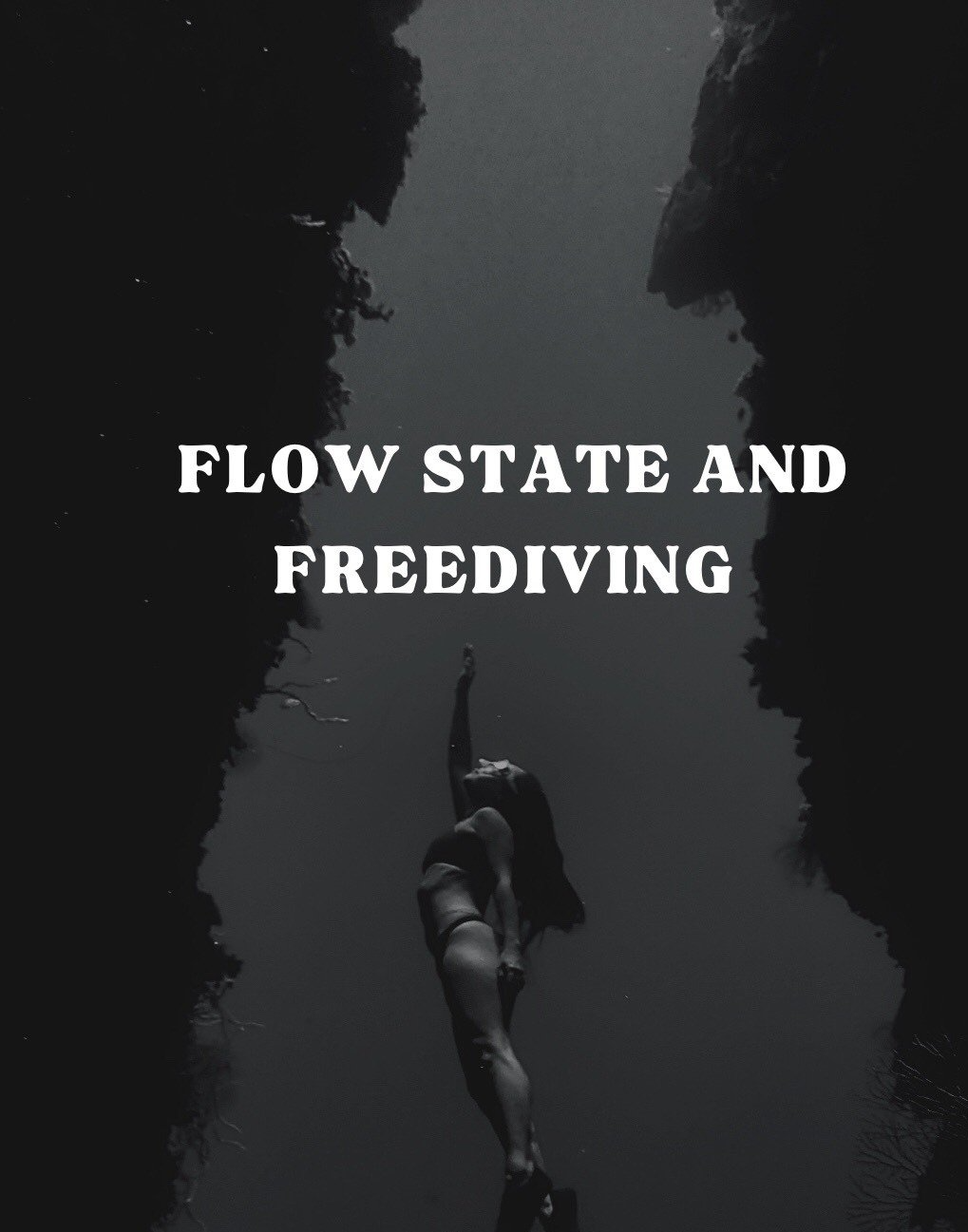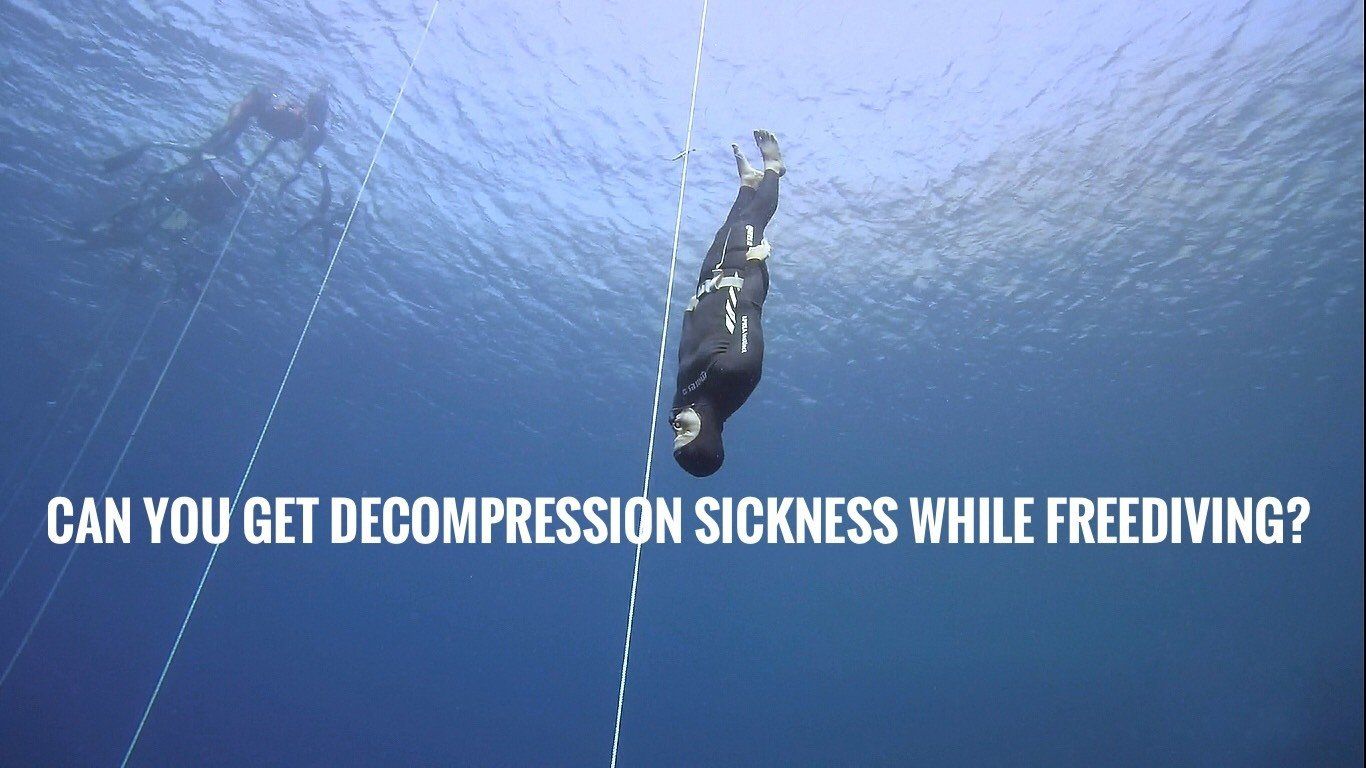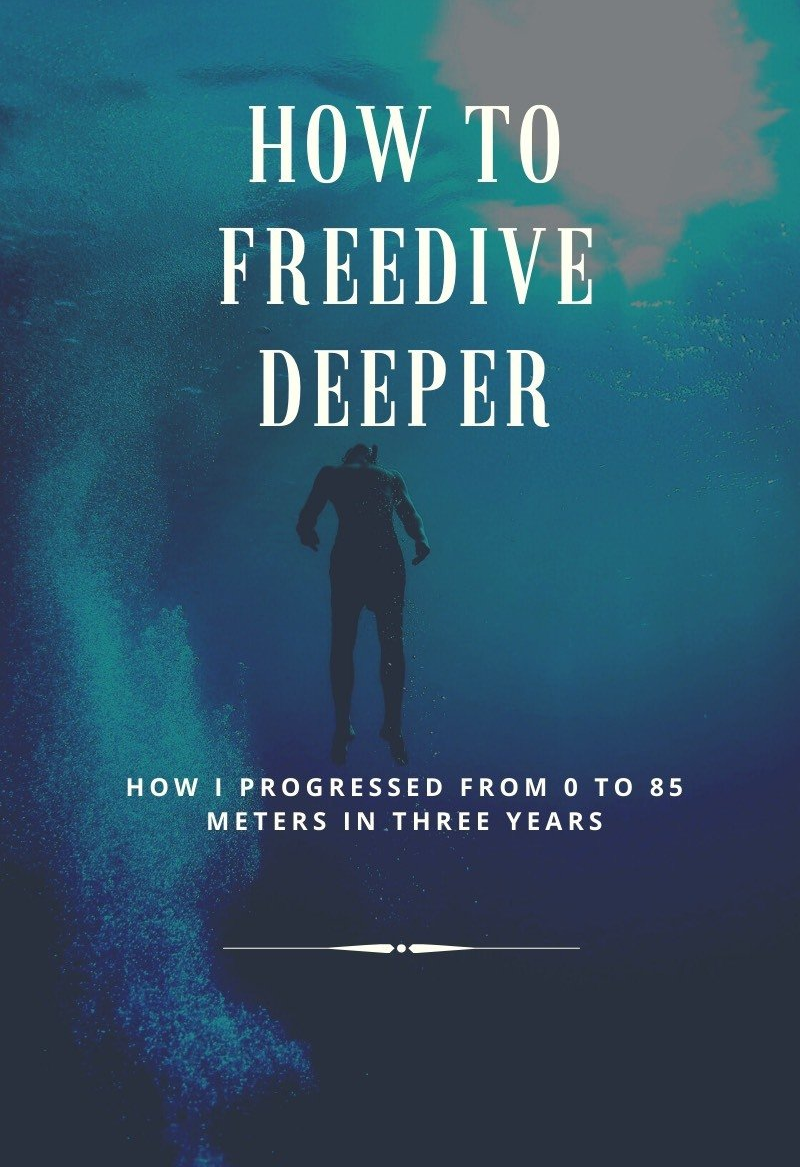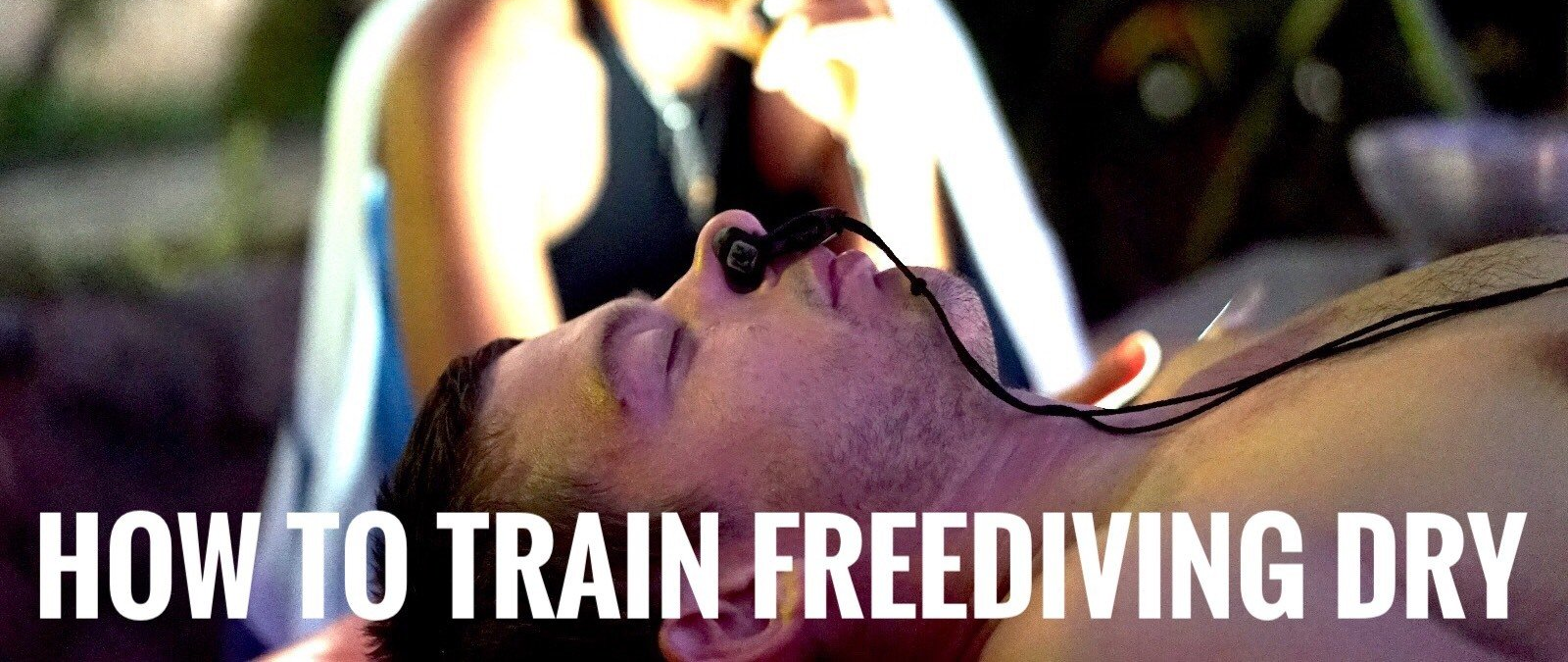Wim Hof method and freediving
Is Wim Hof breathing compatible for freediving?
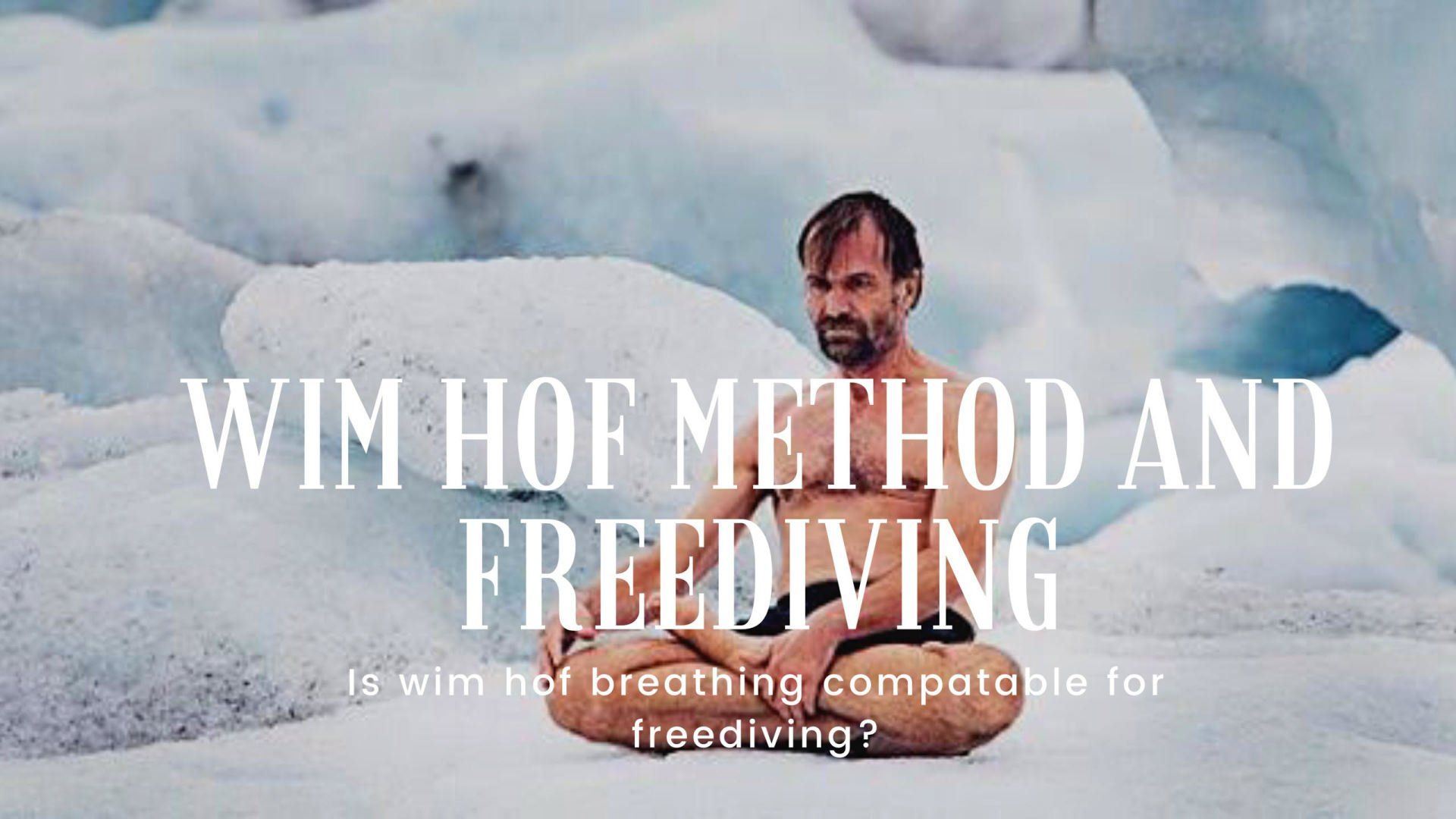
I have practiced the Wim Hof method myself for around two years. Separate to my freediving training. I have also used Wim Hof breathing for experimental reasons, such as for static breath holding to see if it’s beneficial or not. I will explain later about my discoveries.
1. First there is a phase of heavy hyperventilation for about 1-2 minutes or 30 breaths. Each breath should fill up the lungs completely, followed by a relaxed exhalation. This phase will deplete your system of carbon dioxide and make you feel lightheaded.
2. The second phase is holding your breath after a passive exhale (FRC). So simply, after the 30 hyperventilation breaths, you exhale passively and then you hold your breath. You should hold your breath until you get the first urge to breathe.
3. The third and last phase involves the final inhalation and the breath-hold.Here you will take a full inhalation and then hold your breath for around 15 seconds.
So, What do you experience while doing Wim Hof method and why?
The most common sensations one might experience are euphoria, lightheadedness, and tingling in the arms and legs. Some people might see different colors or patterns behind their eyelids, and hear a ringing noise in their ears.
Why does one experience this?
During the phase of hyperventilation, you will experience a feeling of lighheadedness and tingling. This comes from the reduction of carbon dioxide and therefore the pH will increase and get more alkaline. When blood is more alkaline, hemoglobin binds more tightly with oxygen. Which results in not enough oxygenation to the brain and other parts. We need carbon dioxide in our system to get the release of red blood cells to our tissues and to have a more efficient transportation of the oxygen in our body.
You might say “but I could hold my breath for so much longer after doing the Wim Hof breathing method prior to my breath hold, it seems to work?”
Simply put, what happens is that, due to the lack of carbon dioxide in your system, you won't feel any urge to breathe, and at the moment you take your inhale, and you start experiencing these symtoms of euphoria and lighheadedness it will be because of low oxygen. Even though you've probably never held your breath this long before, it may in fact be that at the end of the breath hold, you may be dangerously low on oxygen. Much lower on oxygen than you would have been if you would have done normal breathing prior to the breath-hold.
What happens in our bodies when we hold our breaths after hyperventilation vs breathing normally?

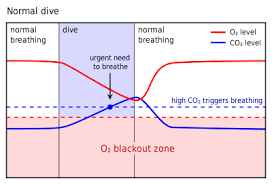
As freedivers, we have to get used to feeling the urge to breathe and raised levels of carbon dioxide. As hyperventilation can fool one's body into thinking that oxygen stores are high when they are not, normal breathing is recommended as a preparation for your dives and is the safest way to approach freediving. We just have to spend more time doing specific training to get used to the raising carbon dioxide levels. Here is a link to a training you can do for just that: https://www.alexanderfreediver.com/what-stops-you-from-holding-your-breath-longer
So, what happens in our bodies when we do Wim Hof breathing?
I tested this out on myself, hooked onto an oxymeter to measure heart rate, oxygen saturation and perfusion index. All breath-holds were exactly two minutes. This is what I found out -
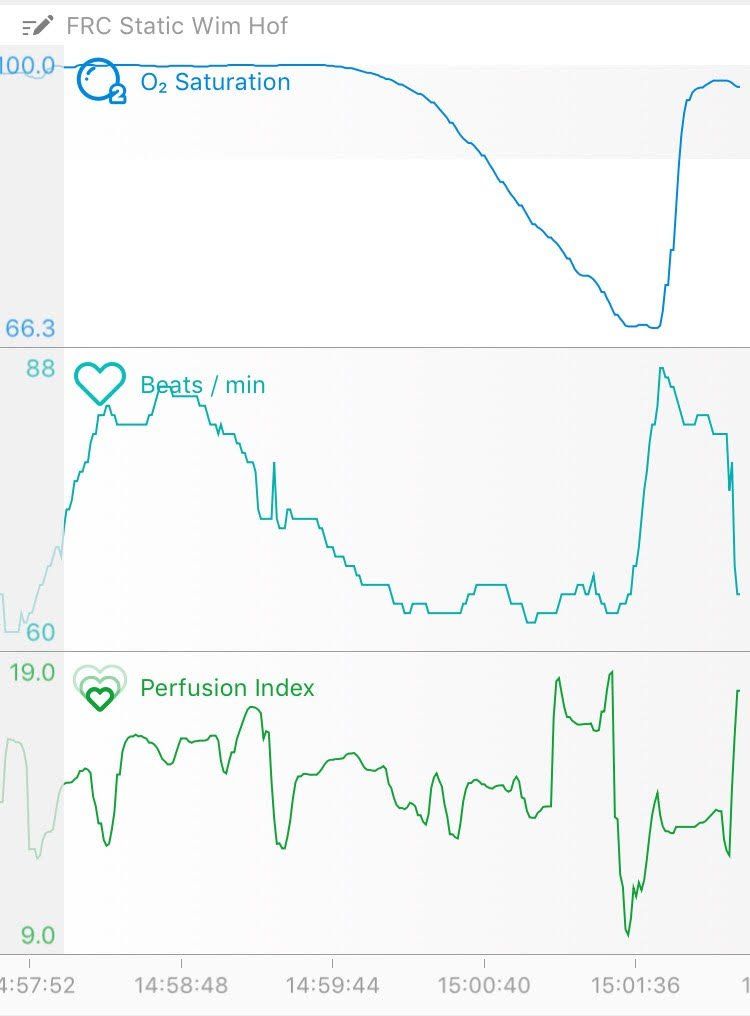
At the end of my Wim Hof breath-hold my levels were:
Oxygen level: 66.3%
Heart rate: 60bpm
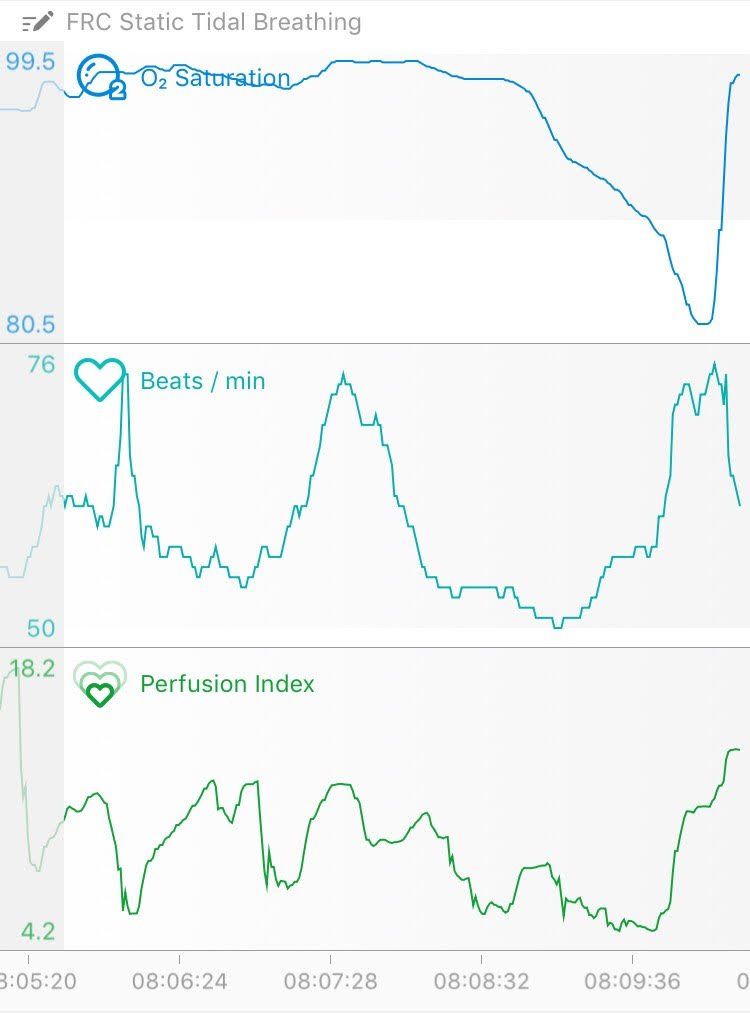
At the end of my normal breathing breath-hold my levels were:
Oxygen levels: 80%
Heart rate: 50bpm
The graphs show what was expected, my body was using up much less oxygen by using a normal breathing preparation prior to the breath-hold.
My heart rate was 10bpm lower which also helps to reduce the oxygen consumption.
My perfusion index was also significantly lower. This means that the ratio of the pulsatile blood flow of my peripheral tissue, such as in the fingertips, was lower, indicating that the mammalian dive response had kicked in and was redistributing the blood from arms and legs to the more vital parts, such as the brain for example.
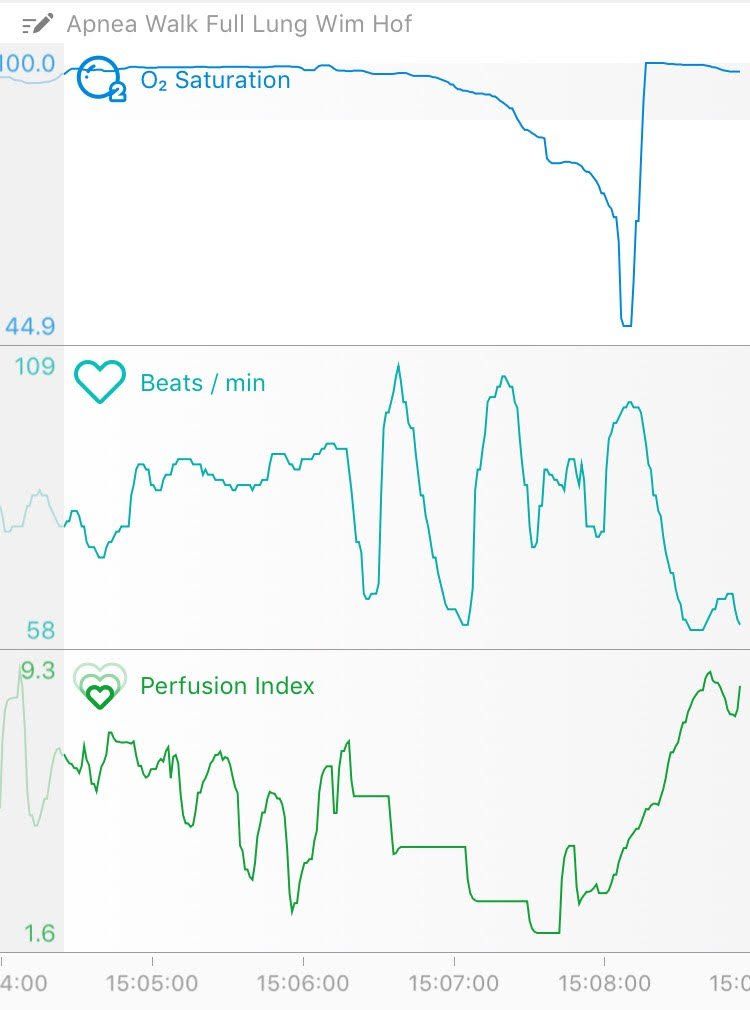
At the end of my Wim Hof breathing breath-hold, my levels were:
Oxygen levels: 44.9%
Heart rate: 58bpm
Perfusion Index: 1.6
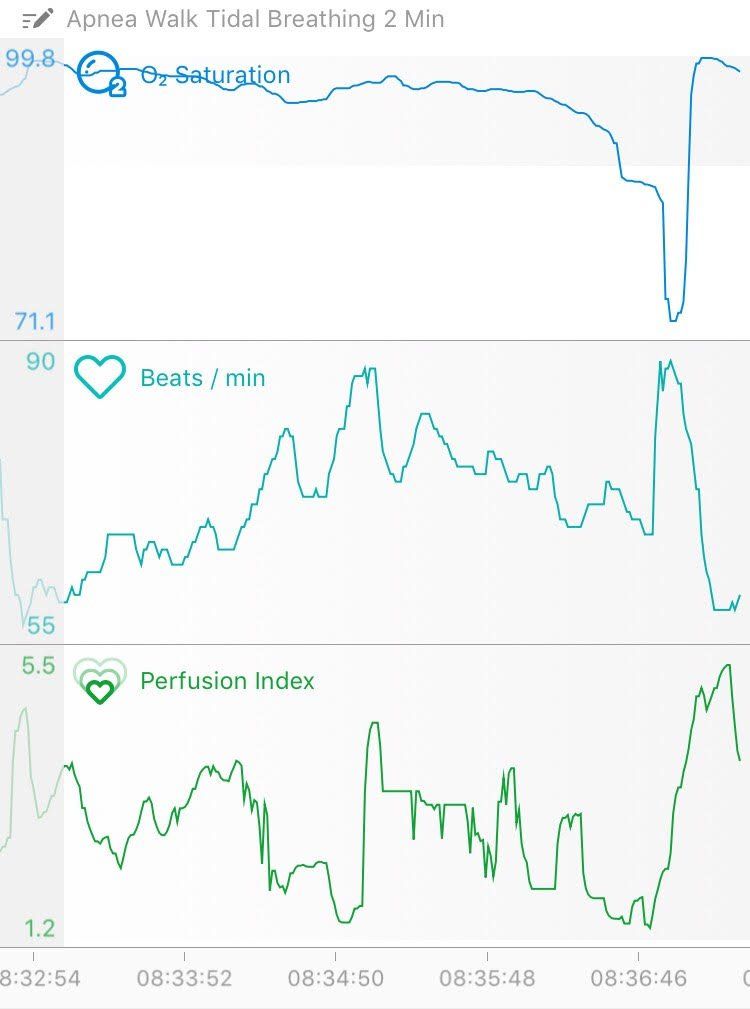
At the end of my normal breathing breath-hold, my levels were:
Oxygen levels: 71.1%
Heart rate: 55bpm
Lastly, I hope that this blog article has made it clear to you how dangerous hyperventilation can be if you combine it with any sort of diving.
I hope you keep practicing both the Wim Hof method and freediving, but when you do so, separately.
Share article:

